SCERT AP Board 10th Class Social Solutions 7th Lesson People and Settlement Textbook Questions and Answers.
AP State Syllabus SSC 10th Class Social Studies Solutions 7th Lesson People and Settlement
10th Class Social Studies 7th Lesson People and Settlement Textbook Questions and Answers
Improve your learning
Question 1.
What is a settlement?
Answer:
- The way we organize ourselves and our living spaces in a place is called a settlement.
- The geographic space where we live and work is a settlement.
- In a settlement, we have different kinds of activities – educational, religious, commercial, etc.
- There may be various settlements of humans, right from a small hamlet to a megacity.
- Settlements usually undergo changes.
- Many basic concepts like site, situation, and the history of the place attract settlements in various places.
- As settlements become more and more diversified in their characteristics, they also become more and more complex.
![]()
Question 2.
How did human lifestyles change with the settlement?
Answer:
- Settlements change for many reasons.
- Over the decades, cities have attracted people from all parts surrounding them as people migrated in search of livelihood, jobs etc.
- This resulted in different types of slum areas or areas of the poor in the city.
- Some are regularized and the rest are unauthorized colonies.
- These places at a later time demarcated for other purposes.
- People face constant threats of eviction.
- Planning authorities ignore the existence of these and these colonies do not receive many public amenities.
- Increasing urbanization is providing greater opportunities for people and causes more economic productivities.
- Apart from that, people face many problems.
(OR)
- Agriculture brought about many changes in human lifestyles.
- People do not have to travel over large areas to obtain food.
- They could now increasingly stay in one place. As agriculturalists, they were increasingly sedentary.
- As agriculture progressed, people organized their life around patterns observed in nature.
For example, the seasonal cycles, how to predict climatic conditions, how to plan the timing at cropping practices and so on. - They also had time to speculate on other things – The movements of heavenly bodies.
- Population size also increased.
Question 3.
Define site features and situation features. Give one example for each from the place you live in.
Answer:
- To understand what kinds of places attracted settlement we need to look at these basic concepts
(I) site (ii) situation (iii) history of the place. - Site refers to the characteristics of the place its topography, altitude, water characteristics (the place with lakes, rivers, underground water, etc.) types of soils, security, shelter from natural forces, and so on.
- The place we live in mostly consists of alluvial soil as it is on the banks of the river Krishna.
- The situation describes the connections with other places.
- The place we live in is equidistant from towns Mangalagiri and Tenali and the city of Vijayawada.
![]()
Question 4.
How does the Census of India define various kinds of places? How does it organize them in order of size and other characteristics?
Answer:
- The Census of India, organizes settlements in India in a hierarchy based on the population.
- The lowermost in hierarchy was a hamlet which is defined as a group of houses within the revenue village.
- The next above is a revenue or census village, which is defined as a village with defined borders.
- All the urban areas having a population between 5000 to 1 lakh are called towns.
- Urban areas having a population between 1 lakh to 1 million are called cities or class I cities.
- Cities having a population between one million to 10 million are called metropolitan cities or million plus cities.
- Cities having more than 10 million people are called Mega cities.
- The Census of India organizes the above on the basis or in order of size, population and a few other characteristics.
Question 5.
What is an aerotropolis? How is it structured?
Answer:
- Aerotropolises are the settlements that are centered around large airports.
- In an aerotropolis the port functions as a city in its own right.
- Many facilities like hotels, shopping, entertainment, food, business conferencing etc. are provided right there.
- People can fly in, conduct their business with their counter parts right there, and fly out with all the comfort of a city, without the traffic and other problems.
- Some of aerotropolises are emerging in these places in India. Bengaluru International Airport, Rajiv Gandhi International Airport (Hyderabad), Indira Gandhi International Airport (Delhi).
10th Class Social Studies 7th Lesson People and Settlement InText Questions and Answers
![]()
10th Class Social Textbook Page No. 88
Question 1.
Field Work:
Look at your own city, town, or village. Draw a sketch map of a selected area using the methods you had learned earlier. Your map should show the following:
Roads; Houses; Shops and markets; Streams and drains;
Some pubic places – hospitals, schools, bus stand, railway station etc.
(a) Are the public places at points that would be convenient to most people?
(b) Do you find any pattern in the location of markets?
(c) Are the houses in clusters? Are they linked to the main road?
Talk to people in the selected area and find out the changes in the settlement during the past twenty years and the reasons for this.
What amenities should have been provided for, but has not been done?
Answer:
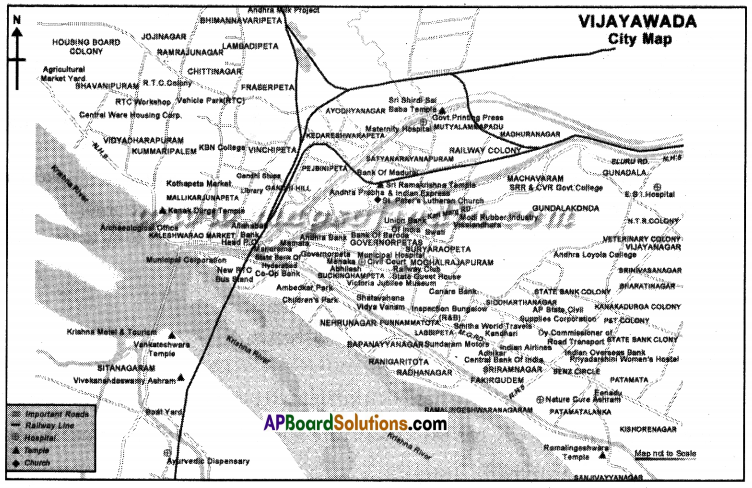
(a) Yes, the public places at points are more convenient to most people.
(b) Yes, the markets are located in definite distances for the use of people.
(c) Many houses are planned and built-in colonies. Most of the colonies are connected to the nearest main roads.
I have interviewed the people of Satyanarayanapuram in Vijayawada. The railway track in that area was removed. BRTS project was sanctioned in that area. Now the BRTS Road is in use to some extent. The nearest Railway Colony is redesigned. Many shopping complexes, educational institutions are established.
Many shops are shifted from I town to Mahatma Gandhi Road. The Vijayawada Bus Stand is the best in the state/country. The Railway Station building is designed as a palace. The roads are widened.
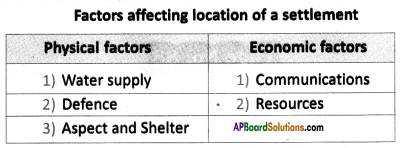
10th Class Social Textbook Page No. 89
Question 2.
Compare and contrast : Using the information above, compare and contrast nomadic and sedentary lifestyles. See how many points you can identify. (Make another table if the space is not enough here.)
 Answer:
Answer:
| Nomadic lifestyle | Sedentary lifestyle |
| 1) Nomadic lifestyle means, they kept moving from place to place. | 1) Sedentary lifestyle means, they are staying in one place. |
| 2) Nomadics gathered food from plants and trees. | 2) Sedentary people take up deliberate production of food. |
| 3) They hunt animals for their meat, hide etc. | 3) They did not travel for long distances for food. |
| 4) Those people are known as hunter- gatherers. | 4) 10,000 years ago they practised agriculture. |
| 5) They started making and using tools initially made of stone. | 5) Their practice of agriculture brought many changes in human lifestyles. |
| 6) With tools they hunt more effectively. | 6) As agriculturists they were increasingly sedentary. |
10th Class Social Textbook Page No. 92
Question 3.
Find out what factors have influenced the settlement of your place in the past ten years.
Answer:
- The settlement where we live has been influenced by many factors in the past ten years.
- The situation feature of it has been taken care of as all the villages and nearly towns are being connected with all-weather roads.
- The soils are of a black cotton type and they were completely made use of with various crops are grown like cotton, rice, turmeric, banana etc.
- The water facility has been provided by the river an 8 km distant and fresh water made available for usage.
- The market was made an uplift with almost all facilities for vendors as well as the customers.
- The visiting places were made aesthetic and tourist attractive.
- A national disaster rescue force was in operation, providing shelter from natural forces.
![]()
10th Class Social Textbook Page No. 93
Question 4.
Observe the following table.
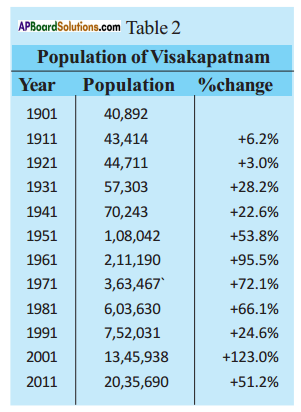
- In the population data given in the above table, are the numbers reported for every decade? If not, which decade’s data is not reported here?
Answer:
Yes, the percentages are reported for every decade except in 1901. - From which decade to which decade has the population increase been the highest (in percentage)?
Answer:
The population increase has been the highest from 1951 to 1961. - From which decade to which decade has the population increase been the least (in percentage)?
Answer:
The decade 1911 to 1921 showed the lowest population increase. - Plot the absolute population of Visakhapatnam on a line graph covering 1901-2011. What observations can you make about the changes in the absolute population size?
Answer:
 Observations :
Observations :- The population growth was stable till 1951.
- The population growth rate was above 50% after independence.
- The decade of 1951 to 1961 experienced the highest growth.
- The absolute population has crossed 10 lakhs between 1991 to 2001.
- It took 9 decades to cross 10 lakhs whereas it took only one decade to cross 20 lakhs.
![]()
10th Class Social Textbook Page No. 94
Question 5.
Review site and situation ….
Column A contains features of a place. In column B, write site, if it is a site feature or situation if it is a situation feature. In column C, write the ways in which this feature could impact.
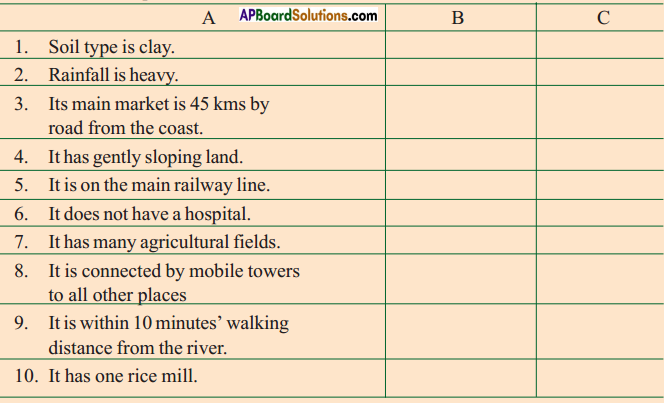 Answer:
Answer:
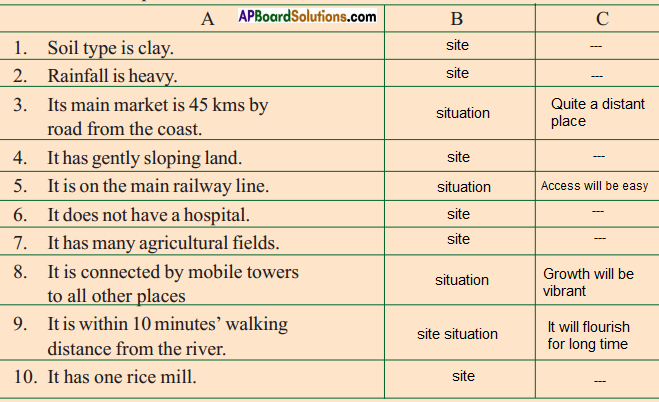
Question 6.
Field work … Understanding the settlement of your place.
- Go to some of the production locations you have noted (farms, factories, offices, shops, quarries, etc.) in the sketch map you drew and find out where they get raw materials/inputs from and where they send their goods.
Answer:
VIJAYA MILK FACTORY (VIJAYAWADA)
They get milk from the neighbouring villages and from our city. They send their production throughout the state and our neighbouring states also like Tamil Nadu. - Which raw materials come from within your settlement?
Answer:
Milk - Similarly, find out whether the finished goods are sold only in your own settlement or sent to other places (if other places, find out where).
Answer:
They supply their milk and milk products throughout the state and nearby states also. - Why did production begin here?
Answer:
Reasons for starting the production :- Favourable location
- Animal wealth in the surrounding villages and in the city.
- Transport facilities
- Storage facilities
- Availability of skilled and unskilled labour.
- Power supply
- Investors
- Other facilities like water etc.
- Give some example of site features that has influenced production in the area.
Answer:- It is near to the railway station and bus stand.
- Krishna river water and underground water is available.
- Give examples of situation features that influenced production in your area.
Answer:
It has train routes and road routes to all the areas in the state and to nearby states. - How was production influenced by the history of the place?
Answer:
Vijayawada is a city on the banks of the river Krishna. Many kingdoms ruled this region. It is famous for its temples of Durgamata and Mary mata. From the historical periods it is con¬nected with the nearest villages. So the production is influenced.
![]()
10th Class Social Textbook Page No. 95
Question 7.
Consider your own place …
The bigger a place is, the more variety of services you can find there. Take educational facilities as an example. This exercise can help illustrate how more specialized services are found in bigger places (i.e., places that are higher in the hierarchy).
- What are the levels of schooling you can get in your place? E.g.: primary,high school, higher secondary (“+2”), college (undergraduate, postgraduate).
Answer:
Postgraduate college. - If you want to study beyond the highest level offered in your place, where would you have to go?
Answer:
I would have to go to any capital city, like Delhi, Hyderabad, Madras etc. - What kind of professional courses can you join in your place? e.g.: engineering, medicine, commerce, technical diploma, etc.
Answer:
All the courses mentioned in the question. - If you want some other professional course, where will you have to go?
Answer:
I would have to go to capital city, like Delhi, Hyderabad, Madras etc.
![]()
Question 8.
Atlas work…
In your atlas and look at a map of Indict. Notice how different places are shown using differ¬ent sizes of symbols: national capital, state capital, other cities, etc. How many levels are shown using different symbols? Are tiny villages shown? Create your own table and arrange the places in decreasing order (i. e., most prominent place at the top, less prominent places as you go down).
Here is an example table for you. Two examples are shown, fill in details for other places.
 Answer:
Answer:
 Repeat this kind of study for any other country of your choice.
Repeat this kind of study for any other country of your choice.
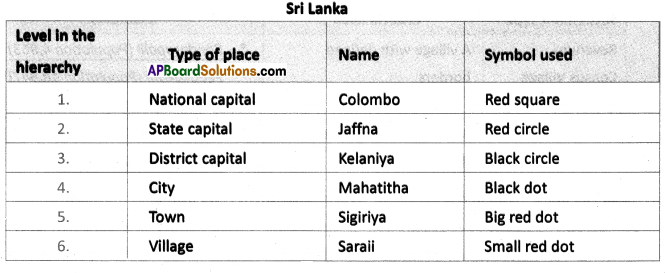
![]()
10th Class Social Textbook Page No. 96 & 97
Question 9.
Indian settlements in the hierarchy.
The Census of India, organises settlements ¡n India using certain criteria. In the table 3 the Census departments definitions of various settlement types are given. Read them carefully and complete the exercise.
Given on text page 97 Is a pyramid. The bottom-most part of the pyramid shows the lowest level of the settlement hierarchy according to the Indian census. The top-most shows highest level. Fill in the details that are left blank.

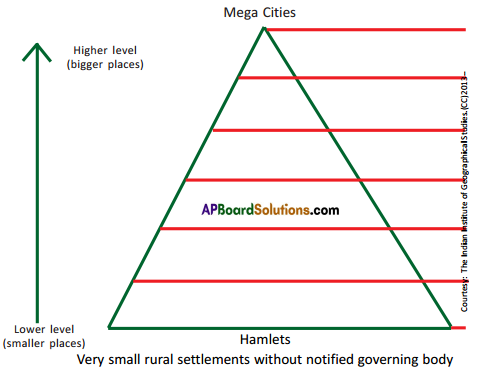
- The name given to the particular level of settlement (Two examples are shown).
- Give one example of a settlement from Andhra Pradesh (except in Mega cities. Why?)
- Try to place the town where you live (if you live in a village show the town in which your school is located) at the correct level, in the space below, give 1 or 2 reasons for your choice.
- Do you think settlements should be classified only on the basis of the population? Can you think of any other way? Discuss with your teacher and identify the criteria for such classification.
Answer:
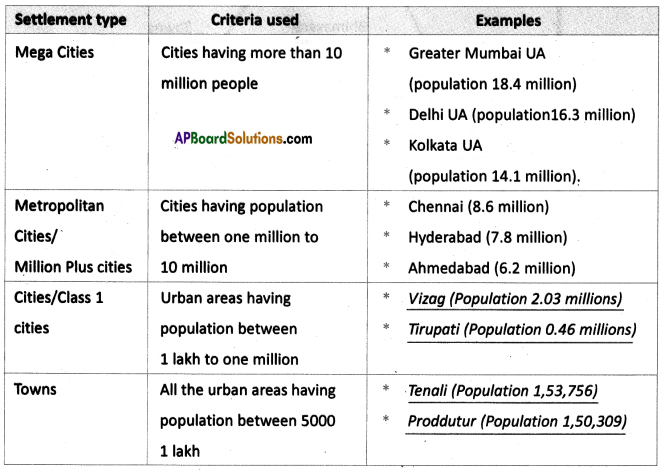

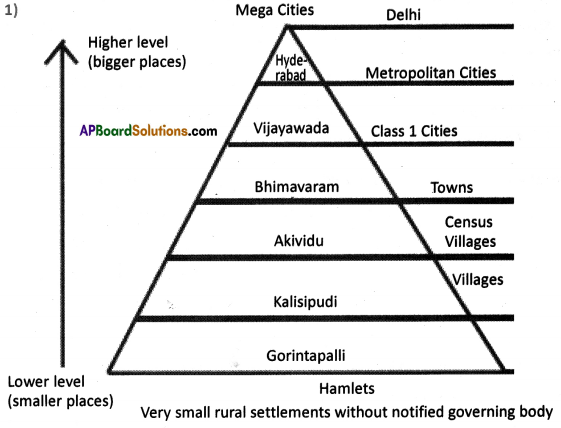
- Vijayawada is a settlement from Andhra Pradesh.
Reason: Andhra Pradesh has no megacity. - I live in Kalisipudi and I am studying in Akividu ZPH School. Kalisipudi is my native place. Akividu ZPH School is the best school we know.
- Settlement can be classified on the basis of population.
It can also be classified on the facilities and historical issues.
![]()
10th Class Social Textbook Page No. 98
Question 10.
What is at the centre of an aerotropolis ?
Answer:
- A new kind of settlement is occurring in many countries, including India.
These settlements are centered around large airports.
Hence the name ‘Aerotropolis’ (or airport city).
Question 11.
Name any two facilities located at or near the centre of an aerotropolis.
Answer:
- In an aerotropolis the airport functions as a city in its own right.
- Many facilities like hotels, shopping, entertainment, food, business conferencing, etc. are provided right there.
- People can fly in, conduct their business with their counterparts right there and fly out with all the comfort of any, without the traffic and other problems.
Question 12.
On an outline map of the world, locate and label the cities given in the examples. Name the country and the airport also on the map. Remember to use different types of text to identify the name of the country and the names of the cities and airports. Thus, it will be very easy to see which words are names of countries, and which are for cities and their airports.
Answer:
- Kempegowda International Airport (Bengaluru)
- Indira Gandhi International Airport (Delhi)
- Rajiv Gandhi International Airport (Hyderabad)
- 5uvarnabhoomi International Airport (Bangkok, Thailand)
- Dubai International Airport (Dubai, UAE)
- Cairo International Airport (Cairo, Egypt)
- London Heathrow Airport (London)
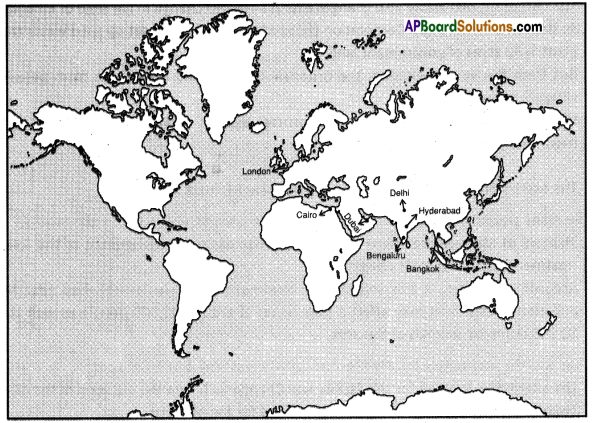
![]()
Question 13.
Suppose the place you have studied for this chapter gets an aerotropolis near it. Mention 3 ways in which the site features of your place may change. Similarly, mention 3 ways in which the situation features of your place may change.
Answer:
- Suppose the place we have studied for this chapter gets an aerotropolis near It.
- The security facilities for the region are beefed up.
- Much of the underground waters are drawn to facilitate those constructions.
- Many lakes underlying might be covered with soil to facilitate the required land.
- Aerotropolis is within 15 minutes walking distance from the University gate.
- It is 20 km away from the central bus station.
- It has all weather connecting roads to all colonies of the city.
10th Class Social Textbook Page No. 100
Question 14.
Using your atlas locate Berhampur.
Answer:
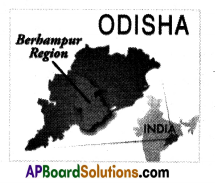
Question 15.
What is the issue about which the people of Mohuda village are upset ?
Answer:
- Mohuda village was on the outskirts of Berhampur Municipal Corporation, Odisha.
- As per a survey made in 2009, Berhampur was producing over 150 tons of solid waste everyday.
- The nature of solid waste also changes everyday as per change in life style of inhabitants.
- So Berhampur Municipal Corporation chose Mohuda village to set up solid waste treatment plant in 30 acres of government land.
- But from the very beginning, the proposal has received opposition from peasants and villagers of the area.
- Villagers of Mohuda have started to protest against the establishment of the solid waste treatment plant near their village.
(OR)
The establishment of waste treatment plant near Mohuda upset them.
![]()
Question 16.
How many people and animals are expected to be adversely affected by the facility?
Answer:
- Villagers of Mohuda area have started to protest against the establishment of the solid waste treatment plant near their village.
- According to them, if this solid waste treatment plant was established near Mohuda, pollution caused by it may affect a population of around 30,000 people as well as around 10,000 domestic animals of the area.
Question 17.
What was the alternative location for the facility and why was it not used?
Answer:
- The alternative location for this facility was Chandania hill on the outskirts of the city.
- Twenty acres of land had also been ear marked for the purpose.
- A boundary wall had been built up around the land patch at a cost of over 50 lakh rupees.
- But it was found that the land at Chandania hill was forest land.
- It was to be transferred to revenue department and consequently to Berhampur Municipal Corporation.
- Then only the waste treatment plant can be established in that land.
Question 18.
What data does the report give about the quantity of solid waste produced by Berhampur ?
Answer:
- As per a survey made in 2009, Berhampur was producing over 150 tons of solid waste every day.
- In three years it must have increased say Berhampur Municipal Corporation Authorities.
- The nature of solid waste also changes every day as per change in lifestyle of inhabitants.
- This is the data that the report gives about the quantity of solid waste produced in Berhampur.
![]()
Question 19.
Berhampur Municipal Corporation authorities say that the amount of solid waste, produced by the city”must have increased in three years.”Do you agree or disagree with their statement? Why or why not ?
Answer:
- Berhampur Municipal Corporation authorities say that the amount of solid waste produced by the city must have increased in three years.
- I do agree with this statement.
- In 2009, itself Berhampur was producing over 150 tons of solid waste every day.
- Not only that, the nature of solid waste also changes every day as per change in the lifestyle of inhabitants.
- Usually city population increases at a rapid rate due to urbanization.
- Thus, the solid waste in Berhampur must have increased in 3 years.


 Answer:
Answer: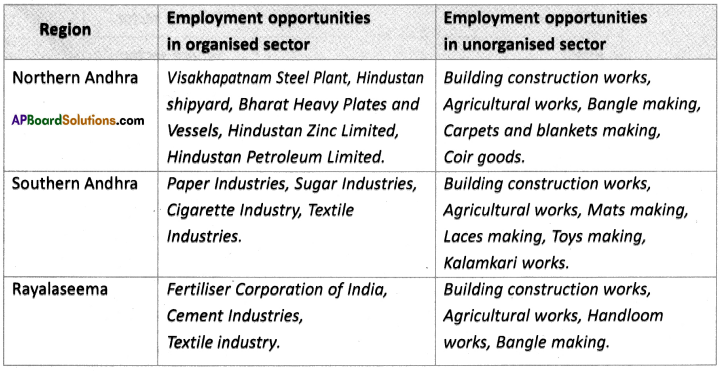
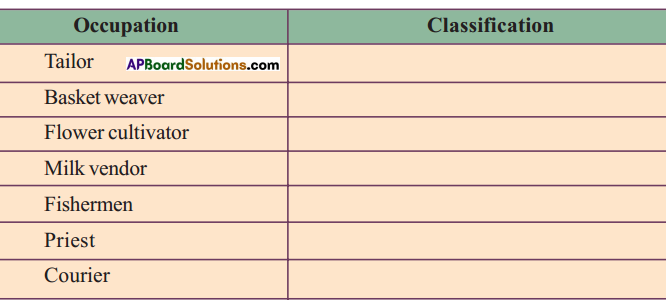
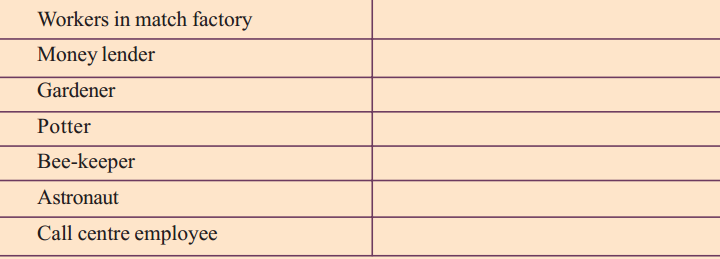 Answer:
Answer: (i) What are the major changes that you observe from the above table?
(i) What are the major changes that you observe from the above table?
 (a) Which was the largest producing sector in 1972 – 73 ?
(a) Which was the largest producing sector in 1972 – 73 ? Discuss : To find out the total value of goods produced should we add them up?
Discuss : To find out the total value of goods produced should we add them up? Answer:
Answer:
 Discuss : Why do both methods give the same result ?
Discuss : Why do both methods give the same result ?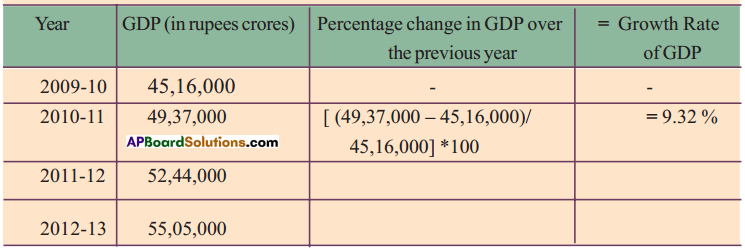 Answer:
Answer: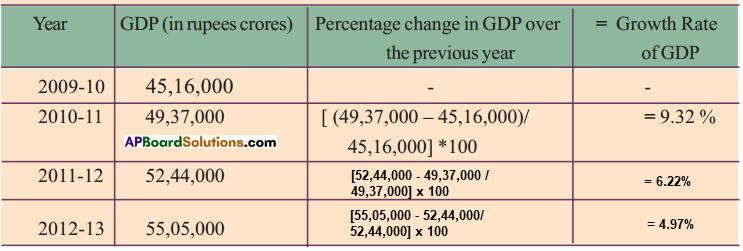
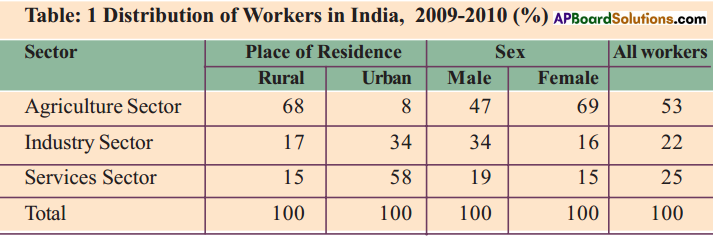 Read the above table and fill in the blanks.
Read the above table and fill in the blanks.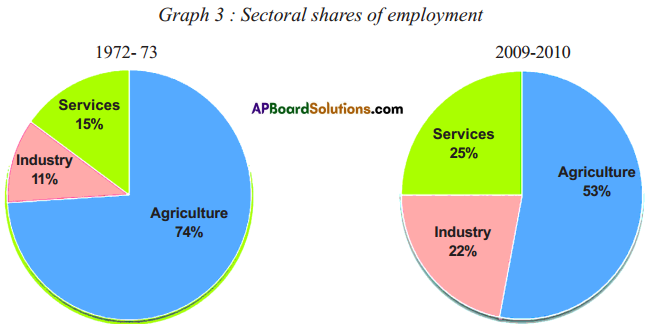
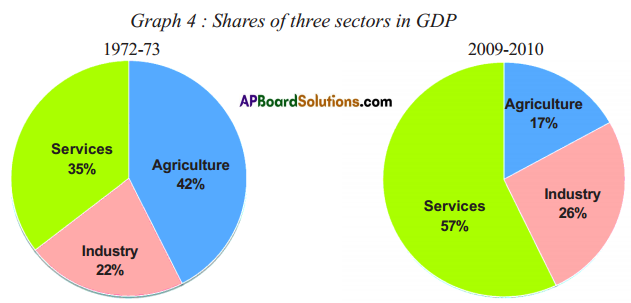


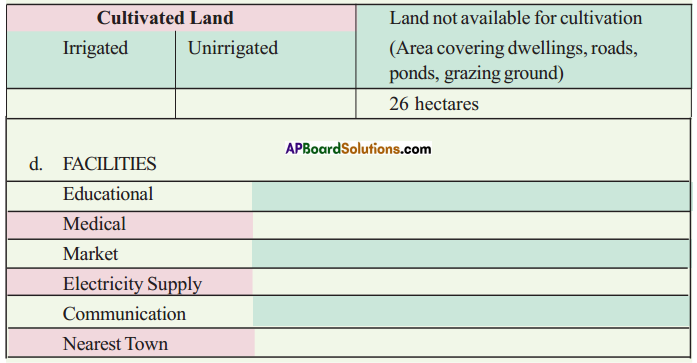
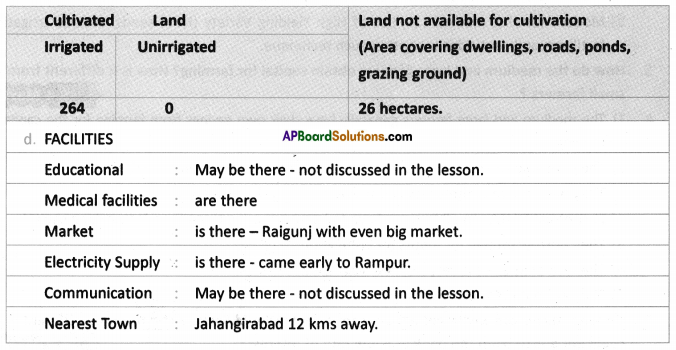
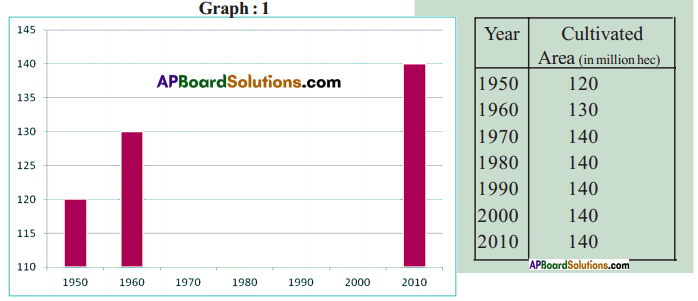
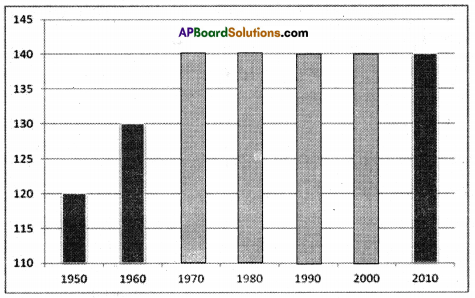
 Answer:
Answer: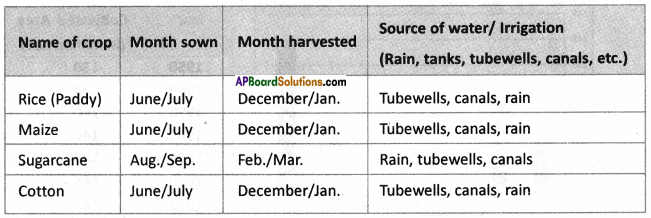
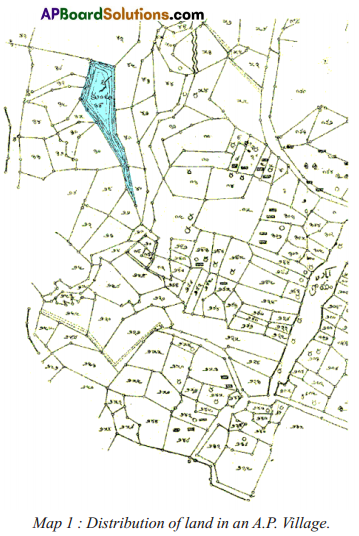 Answer:
Answer: What do the arrows indicate? Would you agree that the distribution of cultivated land is unequal in India? Explain. (OR)
What do the arrows indicate? Would you agree that the distribution of cultivated land is unequal in India? Explain. (OR)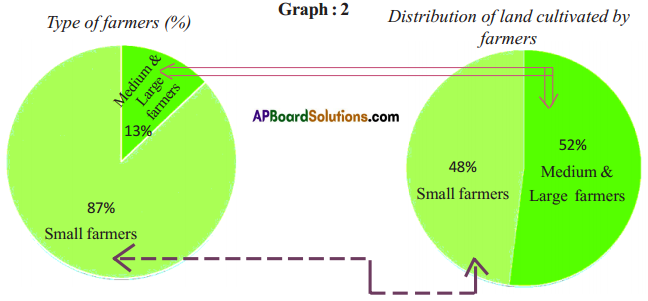 Answer:
Answer: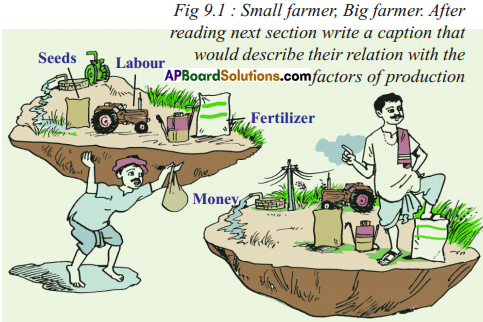 Answer:
Answer: Answer:
Answer: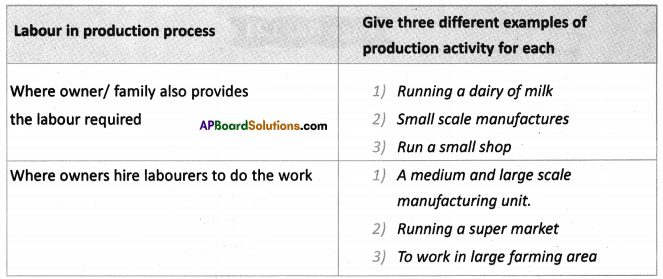
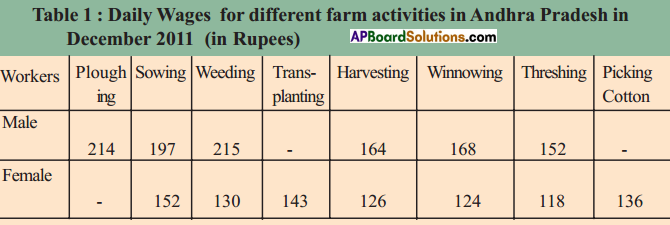 Answer:
Answer: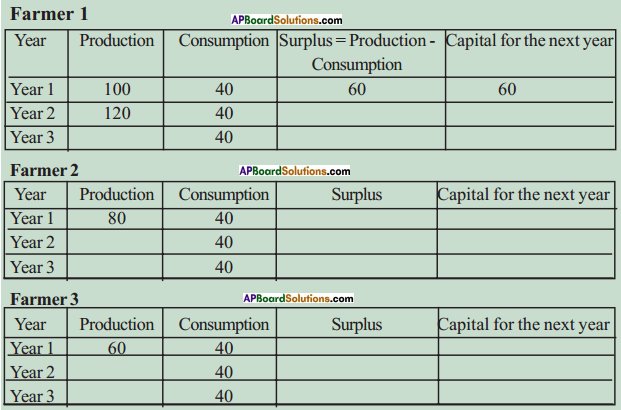 Answer:
Answer: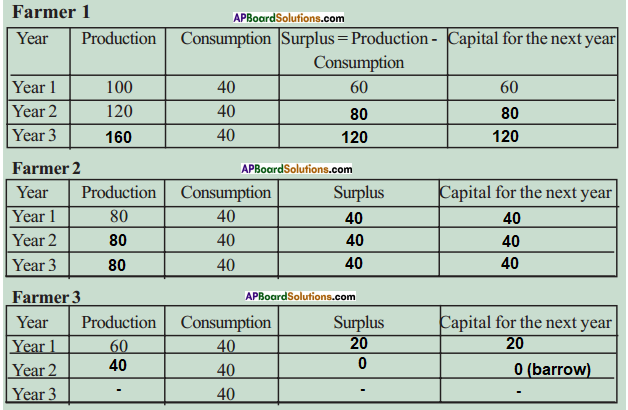
 (a) Identify roughly how many centuries it took for the world population to double for the first time.
(a) Identify roughly how many centuries it took for the world population to double for the first time.


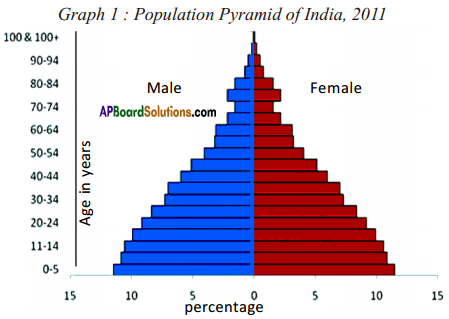 (a) Which country’s population is likely to grow ?
(a) Which country’s population is likely to grow ?
 Answer:
Answer: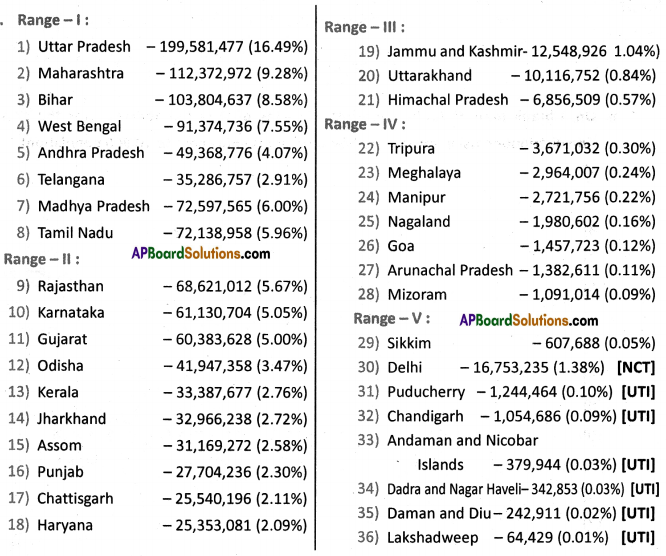
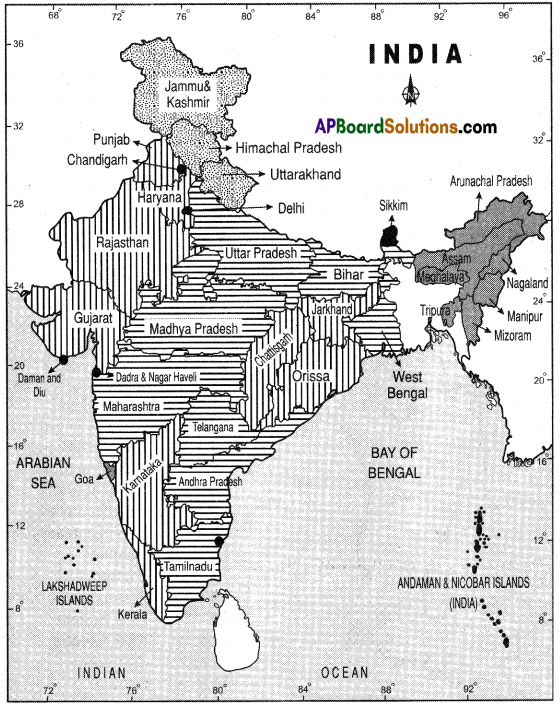

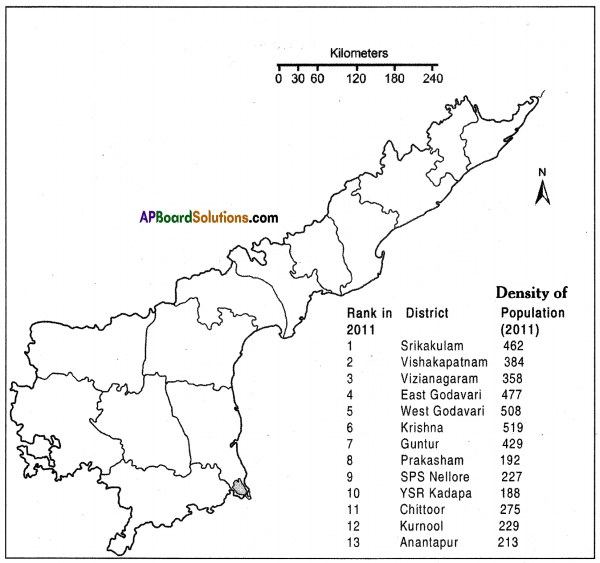


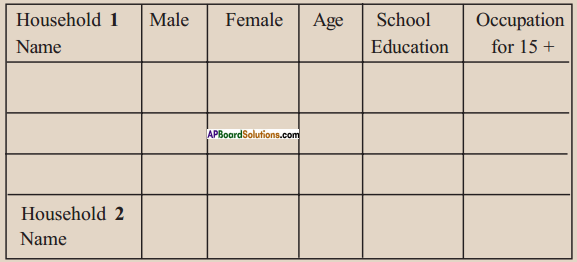






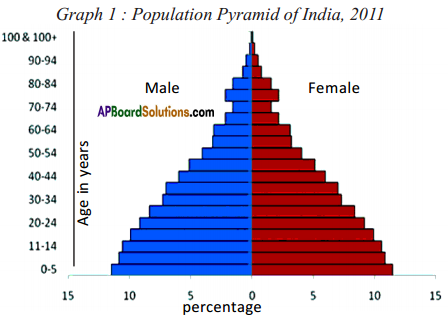 (a) From the age pyramid given above, identify a rough estimate of the percentage of children in the population.
(a) From the age pyramid given above, identify a rough estimate of the percentage of children in the population.
 Answer:
Answer: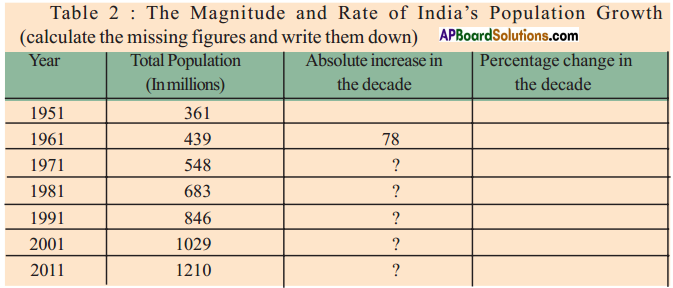
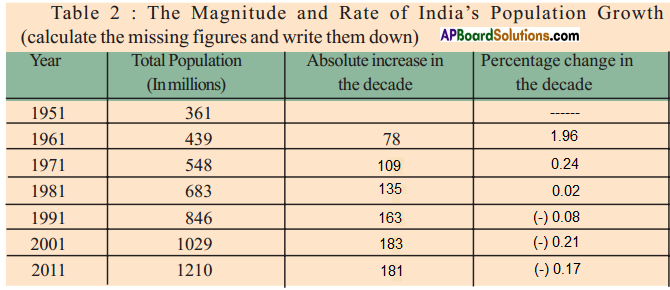
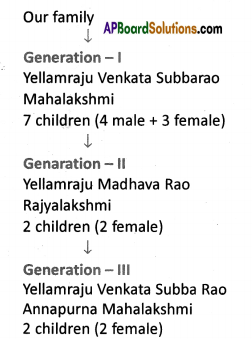 I observe that family planning was planned in the second generation itself. So the growth rate is decreasing at present.
I observe that family planning was planned in the second generation itself. So the growth rate is decreasing at present.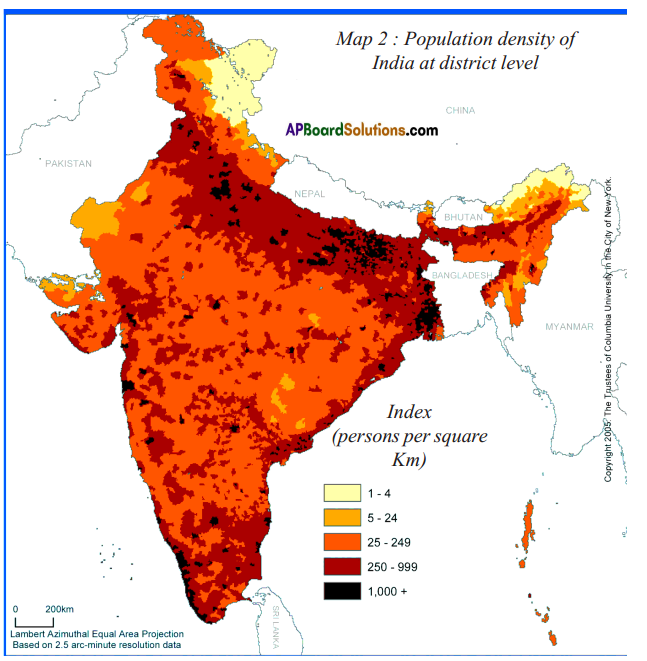 Answer:
Answer: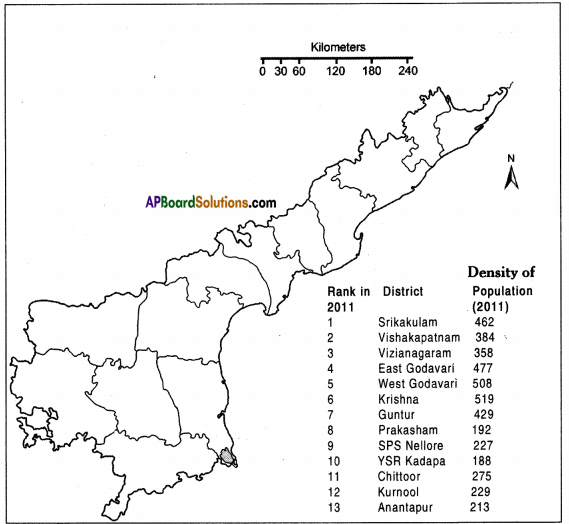 Here are the data for the population density of Andhra Pradesh – 2011. On the above blank district map of AP plot them in ranges.
Here are the data for the population density of Andhra Pradesh – 2011. On the above blank district map of AP plot them in ranges.
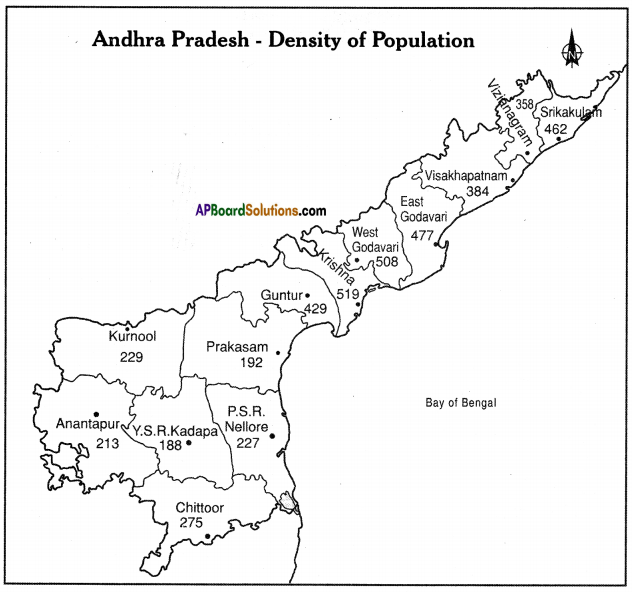
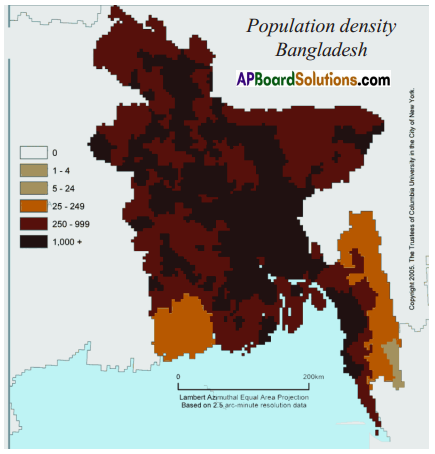
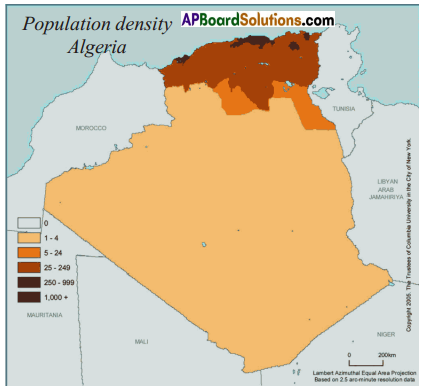
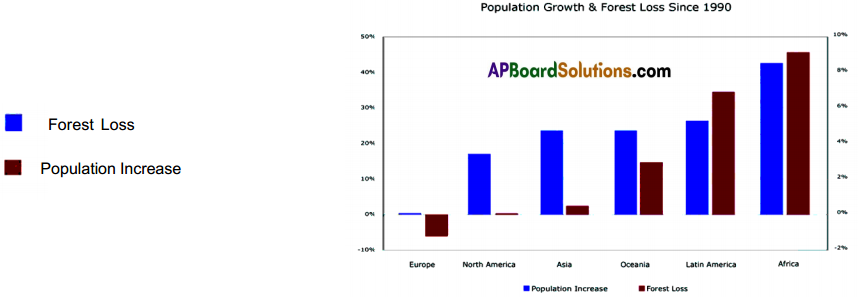

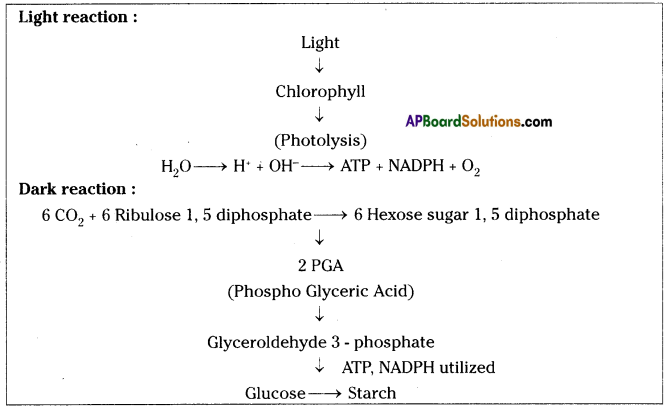
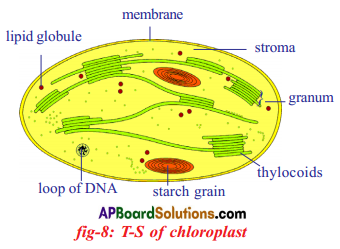
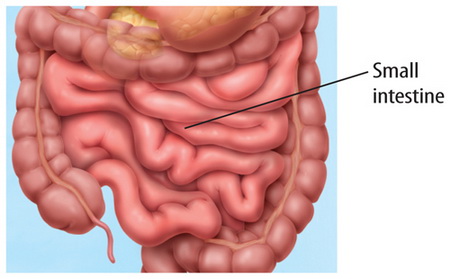
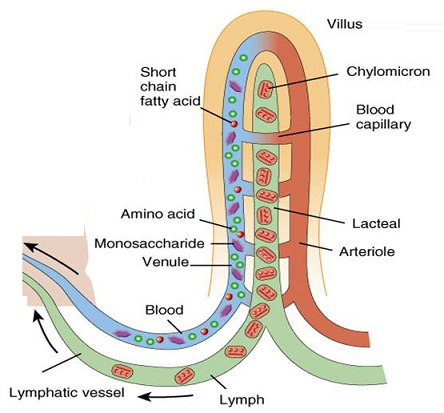

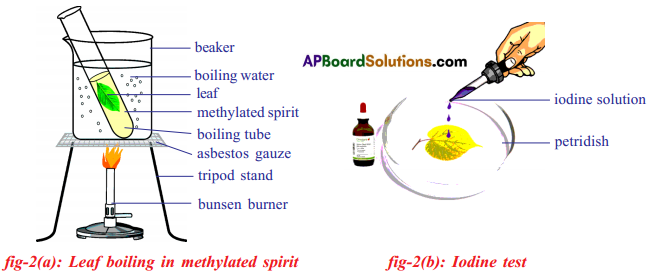
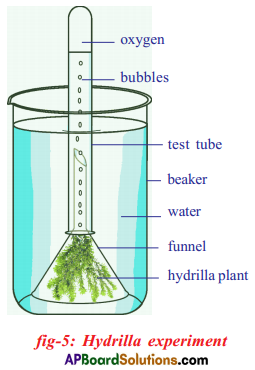
 Answer:
Answer: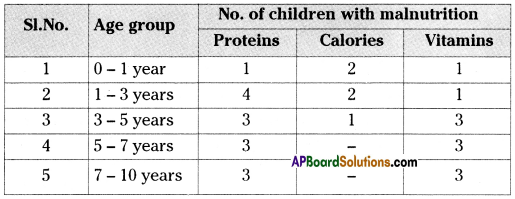
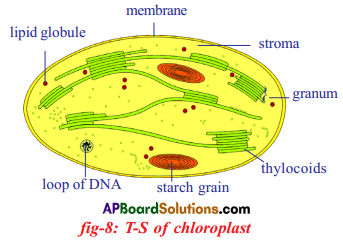 Role of Chloroplast in photosynthesis:
Role of Chloroplast in photosynthesis: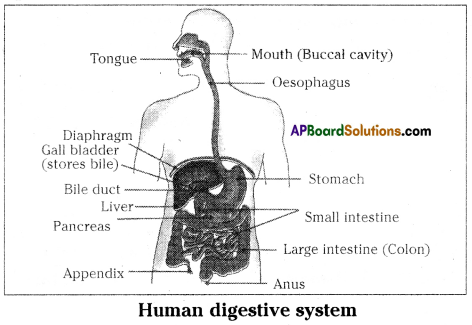 Parts where peristalsis takes place: Oesophagus, stomach, small intestine and large intestine.
Parts where peristalsis takes place: Oesophagus, stomach, small intestine and large intestine. Answer:
Answer:
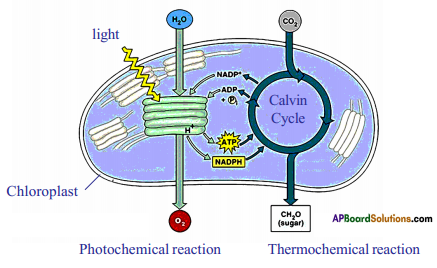 Answer:
Answer: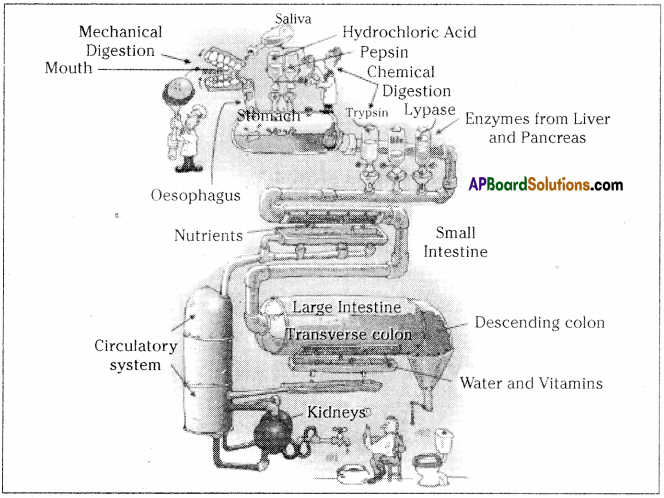
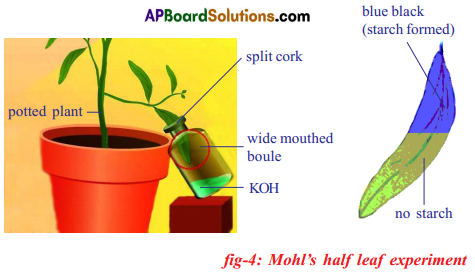 Apparatus:
Apparatus:
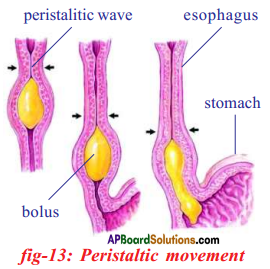
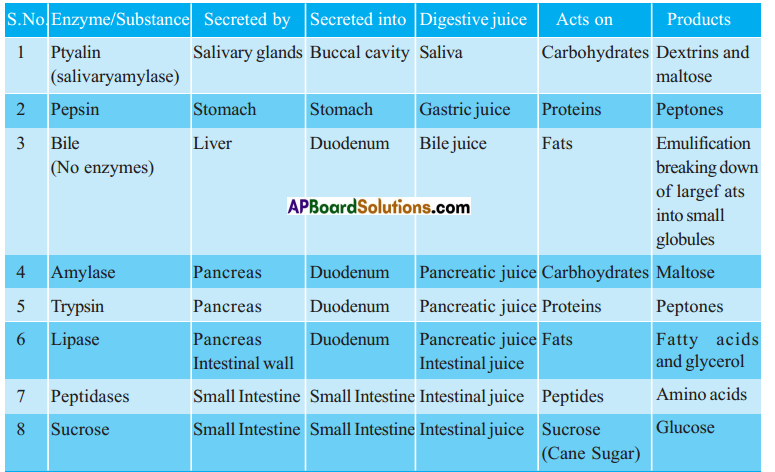
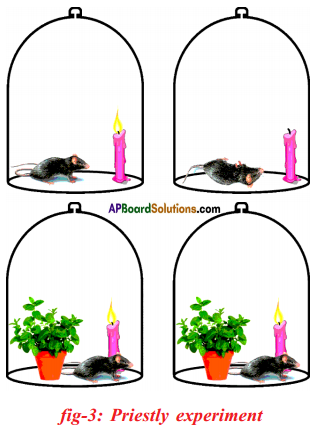 Priestly should have tilted the bell jar to one side and introduced the mint plant without disturbing the experimental set up.
Priestly should have tilted the bell jar to one side and introduced the mint plant without disturbing the experimental set up.